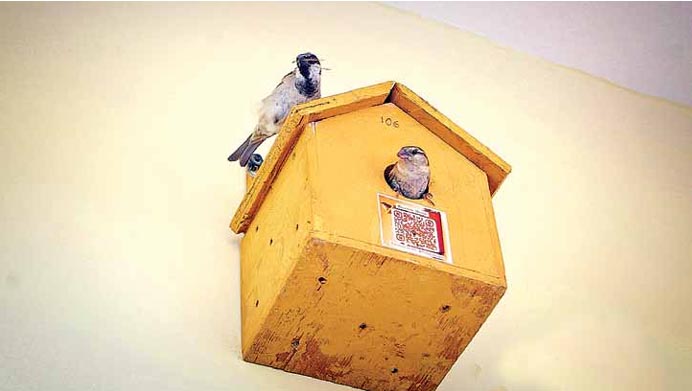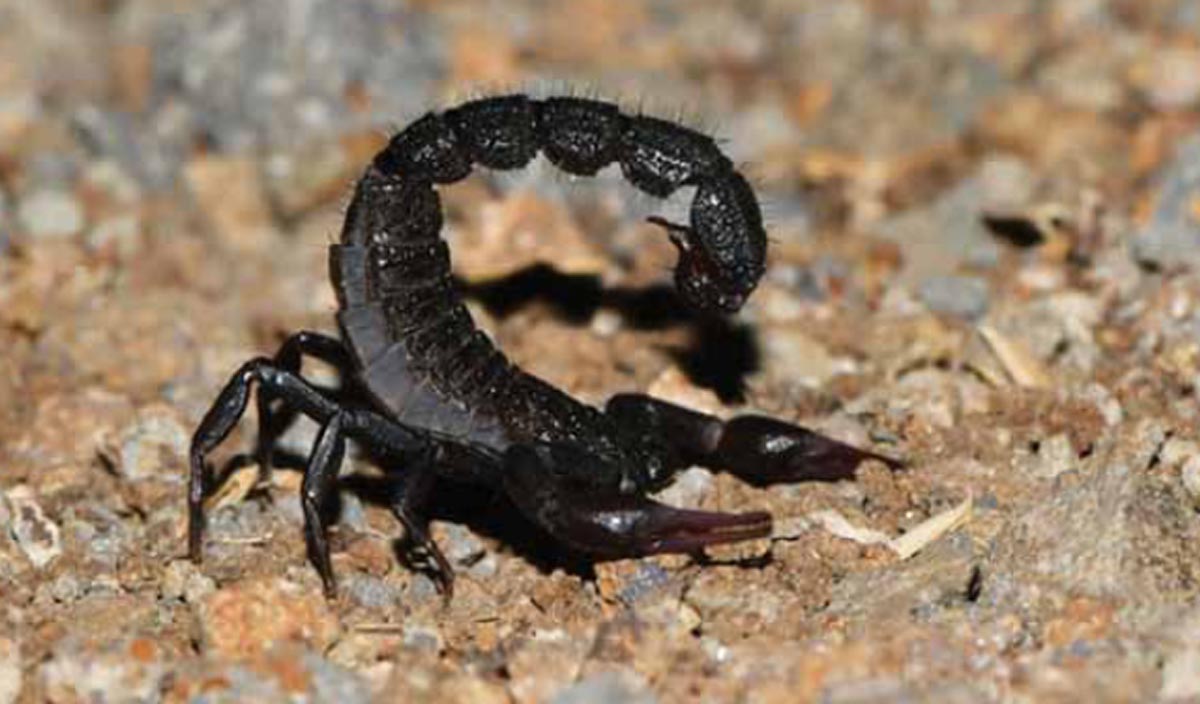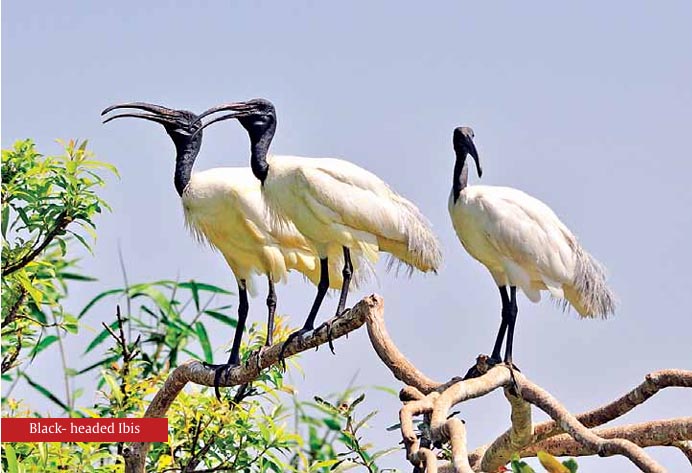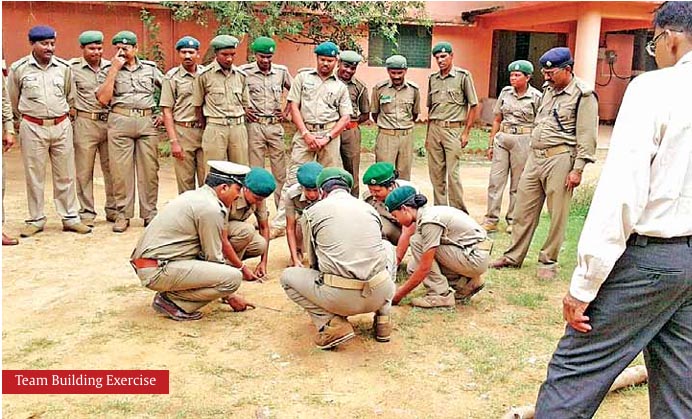
The Sparrow House Journey: Transformative Impact of PBL from Classroom to Communities
By Dr. Archana Shukla, Hemant Kumar Dubey and Vindhya Singh
PBL stands for Project-Based Learning, it is an educational approach where students learn by actively engaging in realworld and personally meaningful projects. This method emphasizes problemsolving, critical thinking, collaboration, and application of knowledge in a practical context.
The journey commenced in 2019 within an 11th-grade biology class in Satna, Madhya Pradesh. As discussions unfolded regarding the alarming deline in Sparrow numbers, attention turned towards Gauraiya, a member of the Passeridae family, scientifically known as Passer domesticus. Characterized by light brown plumage, small feathers, and yellow beak and legs, the male sparrow is distinguishable by a black spot near its throat. The House Sparrow, aptly named for its coexistence with humans since the advent of agriculture thousands of years ago, has witnessed a rapid population decline since 1990s. Notably, organizations such as the Royal Society for the Protection of Birds (RSPB) in Britain
have listed it in the Red List, while the IUCN classifies it as Least Concern. The PBL approach initiated in the classroom has evolved into a community-driven endeavour, aiming to address and reverse the decline of these iconic avian companions. In mud houses, Gauraiya (House Sparrows) faced no challenges in nest-building, but urbanization has
disrupted their habitat. Once accustomed to cohabiting with humans, foraging in fields and finding water near homes, Gauraiya now struggles in the concrete landscape.
Traditional thatched roofs and wooden structures provided nesting sites, but solid concrete walls hinder their ability to build nests. Attempts to nest indoors led to grilles on ventilators and birds adapting to gaps in doors, beneath curtains, and on-air conditioners. Fear of dirt prompts door closures, leaving Gauraiya with no viable nesting space.
The risk of extinction looms unless human intervention provides suitable habitats for these birds.
10 Ways to save sparrows
- As sparrows can’t make their nests easily in urban areas. Provide sparrow houses to aid nesting.
- Plant native plants in your locality.
- Avoid chemicals and pesticides in your garden area.
- Create dust baths and water baths.
- Provide fresh water daily in a big bowl.
- Allow dry grass in your lawn for nest building
- Supply small grains like rice, pearl millets, melon seeds or broken coarse grain.
- Spread awareness about sparrows in your locality
- Educate children about the benefits of sparrows
- Avoid disturbing their nesting sites.

The Journey of Sparrow House
In 2021, a group of students initiated the design of sparrow houses, experimenting with various materials such as cardboard, mud and plastic boxes with a mud layer. After observing sparrows’ preference for cardboard boxes in field trials, the focus shifted to designing wooden nesting boxes. Early challenges, including larger holes attracting other bird species, prompted modifications to the hole size. Continuous improvements were made, incorporating proper ventilation, floor holes to prevent water accumulation, and adjustments to nest depth. The adoption of eco-friendly materials like Multani mitti and Geru further enhanced the sparrow houses. Currently boasting three scientifically proven
models, the project introduced a colony nesting model, successfully installed in the BHEL area of Bhopal with rapid adoption by sparrows. Economic support from the Madhya Pradesh Tiger Foundation Society has bolstered the initiative. Encouraging community involvement, the project emphasizes creating eco-friendly wooden sparrow houses painted with Multani mitti (yellow soil). Maintenance practices include providing nest boxes with appropriate hole sizes, placing houses away from predator-prone areas and providing consistent food and water sources away from nesting sites. This holistic approach to sparrow conservation highlights the successful synergy of innovation, community engagement
and environmental sustainability.
Significance of Sparrow Conservation
The conservation of sparrows holds significant importance, not only for the positive energy they bring to our homes but also for their invaluable role in eliminating Vastu defects. House sparrows play a crucial part in maintaining the ecological balance by collecting small larvae as a source of protein for their chicks. Remarkably, these larvae predominantly consist of pests that commonly infest our homes and gardens, rendering the use of pesticides unnecessary. This natural pest control not only ensures a healthier environment but also contributes in preventing the spread of diseases, including potential future concerns like cancer. The larvae consumed by sparrow’s harbour various microorganisms, such as bacteria and viruses, by selectively feeding on them, sparrows actively impede the transmission of diseases caused by these microorganisms. Moreover, they have a positive psychological impact on the children’s growth and mental health of our elders. Fifty students from C M Rise Govt. Mahatma Gandhi Higher Secondary School BHEL, Bhopal, installed 200 sparrow boxes across 20 religious places, mainly temples in the BHEL area of Bhopal. Eighty percent of the boxes have been adopted by sparrows. The team was led by nine students: Vindhya Singh, Siddhi Sharma, Nikki Ratnakar, Manasavi Sisodiya, Sneha Yadav, Aniruddh Kevat, Amar Navrang, Amrita Yadav and Mansi Patel of 11th Grade. 20th March is celebrated as World Sparrow Day. Let us collectively pledge to provide shelter, arrange food and water, and create a conducive environment for the survival of these little avian friends. By fostering a sparrow-friendly habitat in our homes, promoting biodiversity, and embracing a harmonious coexistence with nature, we can contribute to the conservation efforts for these charming and beneficial creatures.
Related Posts
Microhabitat charateristics and distribution of ground dwelling scorpions in central india
Microhabitat charateristics and distributionof ground dwelling scorpions in central india By Pragya Pandey, Sanjay…
Renganathittu – The fascinating Bird Sanctuary
Renganathittu – The fascinating Bird Sanctuary by T. L. John Ranganathittu Bird Sanctuary in Karnataka…
Revival of Sunabeda Wildlife Division – A Case Study
Revival of Sunabeda Wildlife Division – A Case Study By Vishwanath Neelannavar, IFS Sunabeda Wild…
‘SWOT’ analysis of a leopard rescue operation
‘SWOT’ analysis of a leopard rescue operation By Manish Singh, IFS and Rakesh Kumar Singh…




